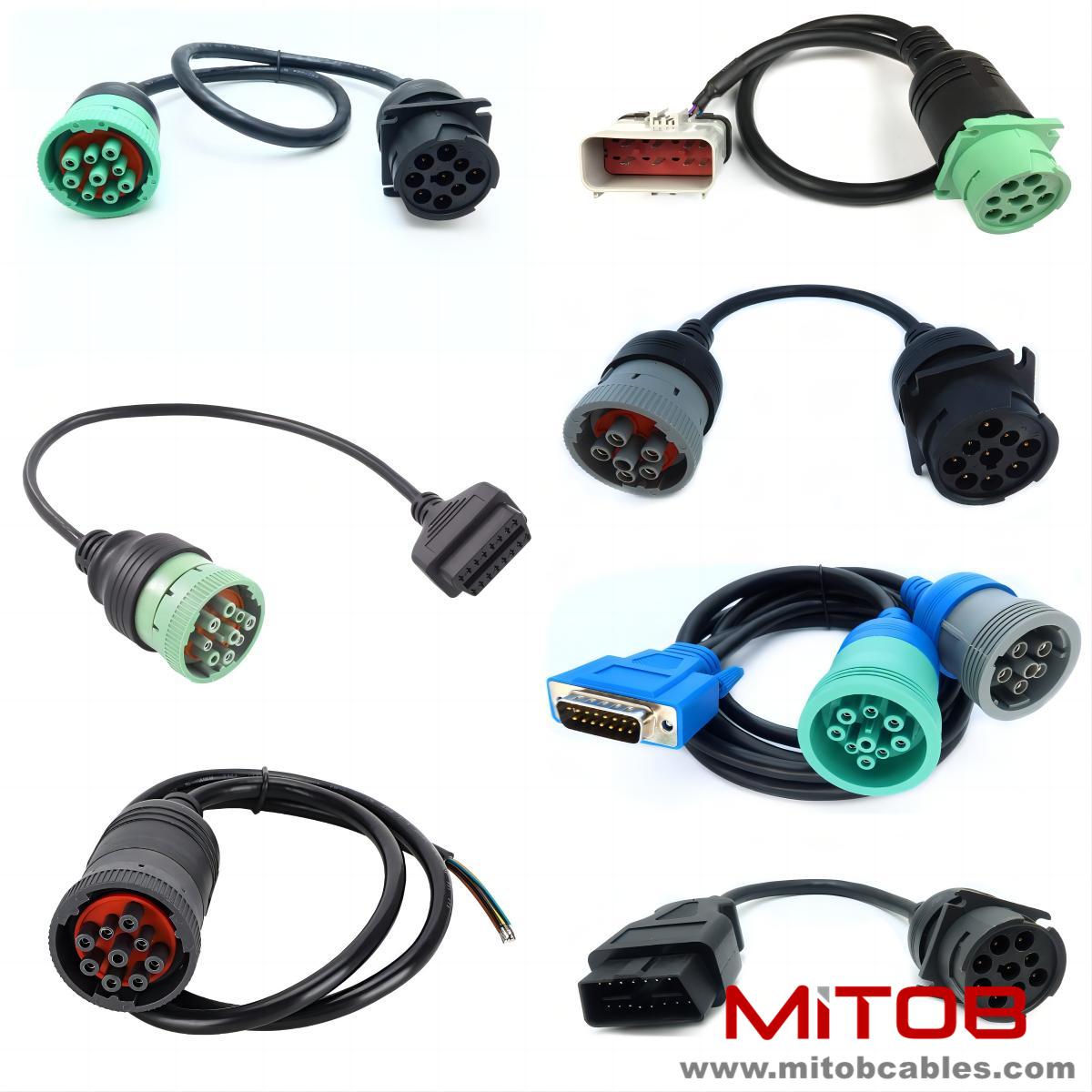How is the compatibility of OBD2 to J1939 cable
The compatibility of OBD2 to J1939 cables depends on hardware interface compatibility, protocol conversion capability, electrical characteristic adaptability, and software support level. In practical applications, it is necessary to comprehensively evaluate the differences in vehicle ECU protocols, data formats, and communication rates. The following is a specific analysis:

Hardware interface compatibility
Physical connection matching: OBD2 interfaces are usually 16 pin female connectors, while J1939 interfaces are mostly 9-pin and other types. Qualified OBD2 to J1939 cables must ensure that the physical interface dimensions and pin definitions are completely matched to avoid signal loss or errors caused by poor contact.
Electrical characteristic adaptation: The electrical standards (such as voltage range and signal level) of OBD2 and J1939 may be different. The cable needs to have level conversion or isolation function to prevent damage to the vehicle ECU or diagnostic equipment due to voltage mismatch.
Protocol conversion capability
Communication protocol differences: The cable needs to have a built-in protocol conversion chip to convert standardized diagnostic requests from OBD2 (such as reading fault code P code) into J1939 format, and vice versa.
Data format conversion: The data frame structure and ID allocation method of OBD2 and J1939 are different. The cable needs to be able to parse the CAN ID of OBD2 and map it to the extended ID of J1939, while handling coding differences in the data domain.
Scope of functional support
OBD2 function coverage: The cable needs to support the statutory diagnostic function of OBD2, including reading fault codes, freezing frames, real-time data streams, etc.
J1939 Extended Functions: J1939 supports more complex vehicle network communication (such as engine, gearbox, body control module). The cable needs to be able to access the dedicated PGN of J1939 and handle multi packet transmission. If the cable only implements basic protocol conversion, it may not be able to obtain deep diagnostic information.
Compatibility issues in practical applications
Differences in Vehicle ECU Protocol: ECUs from different manufacturers may have different implementations of OBD2 or J1939. The cable needs to be adapted to specific vehicle models through firmware updates or configuration tools, otherwise the data may not be parsed correctly.
Communication speed and load: The cable needs to handle speed mismatch issues and avoid communication interruptions caused by high bus loads.
Contact: Kevin
Phone: 0086-18823374992
E-mail: kevin@mitobcable.com
Whatsapp:
Add: Bld B2, Floor7 , Xinghe Zhongkai AI Industrial Park, Zhongkai High-tech Zone, Huizhou,China